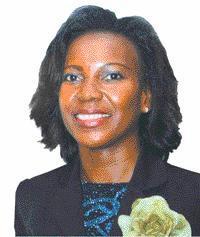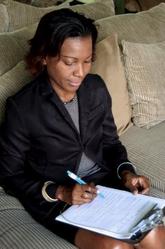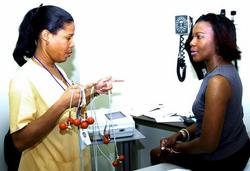
Eulalee Thompson
February is Heart Month and haunted by reports that cardiovascular disease is the number one killer and that more women (in some age groups) die of heart disease than all cancers combined, The Gleaner's 'Health' editor, Eulalee Thompson, paid a visit to the Heart Institute of the Caribbean,in Kingston, to have her heart checked out.
Today, I am the patient. I arrived at the Heart Instituteof the Caribbean (HIC) in Kingston three minutes early for my 10 o'clock appointment a cardiac consultation.
As I sat in the waiting room completing the intake form, Rachel McLaren, HIC's sales and marketing manager came to greet me; a few minutes later, Dr. Ernest Madu, consultant cardiologist and HIC's chairman and chief executive officer also came to meet me. They both ushered me through the state-of-the-art heart diagnosis and treatment facility, past the new Catheterisation Lab, to Exam Room 2.
Dr. Madu's detailed history taking weeded me out of the high-risk category for heart disease. That was reassuring.
The next stage was the physical examination. I am a very demanding patient and I wanted to know the reason for the consultant's every action. After asking "why" a few times, Dr. Madu assured me that it is standard for HIC's consultants to involve patients in their health care by explaining all the tests.
Eyes
On examining my eyes, he explained that the retinal spectrum is like a window to the vascular world.
"If someone has uncontrolled high blood pressure ... they can have damage to eyes, kidneys, heart muscles, blood cells. When we look into the eyes, we are looking for (changes) ... if you have bad high blood pressure or your blood pressure control is not working, then we can see it ...," said Dr. Madu.
"Oh and you can see all this by looking into the eyes," I asked.
"Yes ... and by the way, yours are fine," he said. "And ... your pupils reacted normally."
"Oh great," I said with relief.
The trained ear
About my neck, he check my carotid artery, blockages here could indicate a stroke possibility but my upstroke and runoff were normal; my jugular venous pressure and thyroid were also normal.
The useful stethoscope and of course, the trained ear of Dr. Madu, can distinguish and evaluate sound variation in the heart beat. He indicated that my respiratory functions and cardiac rhythm were regular with S1 and S2 (heart valves) functions beingnormal with no murmur or gallop.
"Most people have some murmur as there is closure of valves and blood splashing back and you can hear it ... some people carry around 'a murmur' for years as a medical problem and this may be normal," Dr. Madu said.
Finally, Dr. Madu examined my extremities my feet and hands. Clubbing of the feet, he said, would indicate further investigation of right ventricular pressure. Mine were normal, though I thought that ill-fitting female shoes would have given me a failing grade here.
"Congratulations, you have passed your test," he said. That sounded really good.
The ECG
But the examination was not yet over. Nurse Odaisy Moya, HIC's Registered Nurse Manager, wheeled in the electrocardiogram (ECG) machine. It was time to measure the electrical activity of my heart. She explained that she was using a 12-lead machine and that small amounts of conductor gel would be placed on my chest and lower limbs before attaching the leads. In a few seconds, the ECG tracings were on the paper, the jagged lines representing my hearts electrical activity.
After interpreting the tracings, Dr. Madu announced that my ECG was normal with the recommendation of further cardiac risk assessment an echocardiogram, carotid ultrasound and fasting lipid profile. He also encouraged me to continue my daily regimen of exercise, adequate daily water intake, fruits and vegetables and avoidance of tobacco.
I left HIC's office smiling from ear to ear. My heart's not broken. I later rewarded myself with a decadent ice cream sundae. Now, how's that for irony?
Eulalee Thompson is a health journalist and psychologist. Email: eulalee.thompson@gleanerjm.com.Step 1:

Filling out the intake form - I sit comfortably in the plush waiting room sofa filling in basic biographical information.
Step 2:

Inteview with the consultant cariologist - The 'top doc' Dr. Ernest Madu, chairman of the Heart Institute of the Caribbean....
Step 3:
The physical examination Dr. Madu takes my blood pressure, then checks my eyes, jugular venous pressure, respiratory and cardiac functions using his stethoscope.
Step 4:

My electrocardiogram (ECG) examination Nurse Odaisy Moya tells me about the 12-lead ECG that will record the electrical activity of my heart on a moving paper strip.

